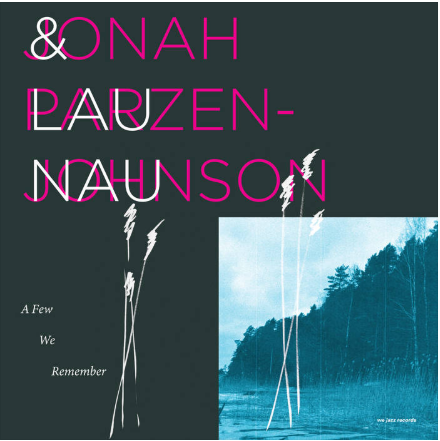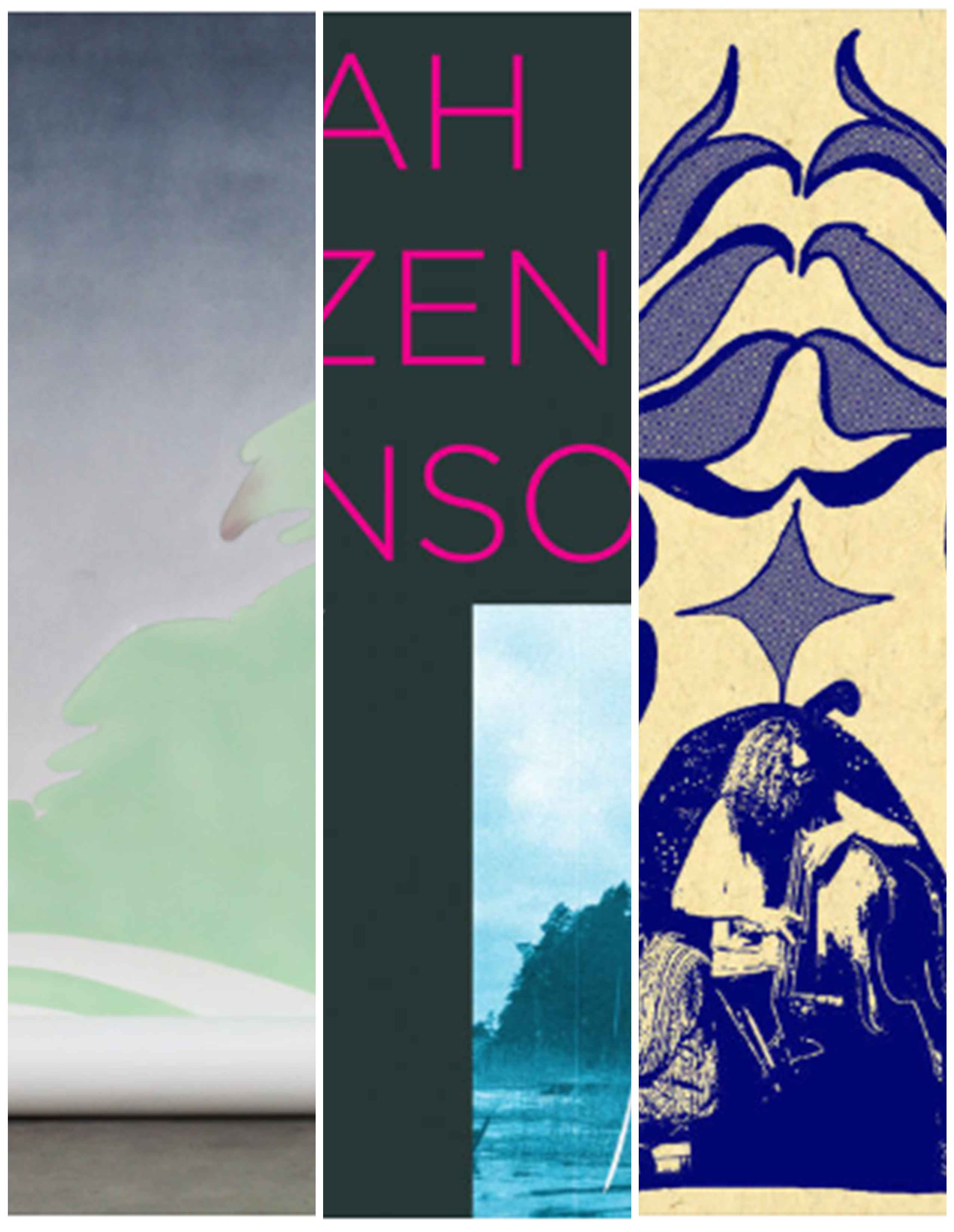Three records released on small indie labels this autumn offer glimpses of Finnish music and sound art that thrives on the edges, away from genre categories, multinational corporations and Spotify-generated playlists. All of these artists are active in many line-ups and collaborations, with entwining tendrils of mutual connection and inspiration.
These low-budget, self-produced recordings all have an authentic, intimate homey feel, even when they get off into sometimes-wild experimentation. They’re typically only available on vinyl and on Bandcamp, a more artist-friendly online music platform.

Oiro Pena started out as a solo project by multi-instrumentalist Antti Vauhkonen in 2018. By then, he’d been playing flute and sax for several years in the fusion band Soft Power along with keyboardist Staffan Södergård, who joined as Oiro Pena gradually became a group. Inspired by spiritual jazz and folk music of the 1960s and ‘70s, it releases vinyl in small pressings, with handmade cover art on inside-out reused sleeves.
Vauhkonen occasionally sang on the first few Oiro Pena releases, but they were mostly instrumental until 2023, when lead vocalist Merikukka Kiviharju and violist/backup singer Merimaija Aalto joined for the album Puna.
On this follow-up LP, Béke (Ultraääni), Kiviharju plays a more central role. Her singing is more varied than on the louder previous record, from high-energy barroom blues to tender, childlike reveries. Indeed, the whole album is more wide-ranging, with fewer free-jazz saxophone blowouts and more melodic, folky tunes. Recorded in an old wooden house in rural Siuntio last January, it has an informal, rough-hewn atmosphere.
“Rannalla itkijä” (The Weeper on the Shore) is a new take on “Läksin minä kesäyönä käymään” (I Went Out on a Summer Night), a folk song based on the Kanteletar, an 1840 collection of Finnish folk poetry in Kalevala metre, and arranged by Leevi Madetoja by a century ago.
Kiviharju takes a rough-edged bluesy approach, with Aalto joining on harmony as Vauhkonen’s flute solo begins, first fluttery and then as fierce as a flute can be. Pianist Södergård and standup bassist Philip Holm keep up an easy-going, rolling pace with slight improvisational ornamentation.
The faux-naïf nursery-rhyme “Mummon biisi (Hei rantaniityllä tuolla)” (Grandma’s Song [Hey, There on the Seaside Meadow]) with its butterflies and romantic viola solo, is reminiscent of Finnish early-‘70s proto-hippie and prog-rock pioneer Pekka Streng.
The album’s first two fierce, anthemic tracks suggest a meeting of the 1960s political free jazz of Max Roach and Abbey Lincoln with Finnish leftist vocal group Agit-prop. “Kaukana” (Far Away) is a reworking of the African-American spiritual “Motherless Child” dominated by free-jazz saxophonist Sami Pekkola. He’s a veteran of dozens of line-ups including Black Motor, Oaagaada and the Pharoah Sanders-inspired Phardah, which released its debut on Ultraääni last spring. Pekkola is also a member of Arwi of Lovers alongside fellow Oiro Pena saxophonist Johannes Sarjasto and various groups with sound and installation artist Antti Tolvi.
Pekkola and Tolvi have also played with another loose collective centred around a quirky, reclusive figure, Kemialliset Ystävät. Jan Anderzén’s loose, playful Tampere-based “psychedelic folk” project has released more than a dozen albums over three decades. Other guests have included Petra (“Pelkkä”) Poutanen, Marja Ahti and Lau Nau (Laura Naukkarinen), the latter two with new albums out this fall.

Marja Ahti, an electroacoustic sound artist based in Turku, works with found sounds, old modular synthesisers, pianos and idiophones, which produce tantalising vibrations. Most of her half-dozen albums have been solo or with a single collaborator, often her partner Niko-Matti Ahti, also a sometime member of Kemialliset Ystävät.
This time, though, she has an actual band – though it wasn’t that simple. Touch This Fragrant Surface of Earth (Fönstret) features Stockholm-based cellist My Hellgren, clarinettist Isak Hedtjärn and percussionist Ryan Packard.
While the other albums reviewed here were recorded live at rural home studios, Ahti’s disc took a far more convoluted path. She used recordings from a live show in Chicago, adding parts from the musicians before playing the work at a festival in Stockholm last year with the trio live on stage. She then reworked the same recordings “through several further iterations” into the two different tracks on this album, adding recordings of Scottish-Lithuanian Sholto Dobie’s DIY pipe organs.
The result is two long slow pieces, carefully crafted for a subtle, multidimensional listening experience. The title and cover art invite us to use our senses in a mindful way, as does the sound art within.
This is not an easy-listening ambient album to put on as background for dinner. It starts with an eerie high-pitched drone, like rubbing the edge of a new crystal glass – some of the album’s ultrahigh frequencies may puzzle your dog. There are chimes, distant thunder (perhaps), a hollow howling, the slightly menacing buzz of insects or mini-drones. In between is the subtle presence of clarinet and cello, producing sounds in unconventional ways.
A tiny, tinny sound like a woman’s voice barely heard amid radio static might suddenly spin you into a Cold War spy story, while the ultra-high creaks and running water could drop you on a melting glacier. This is a slow-paced soundtrack for an inner narrative.

Like Ahti, Lau Nau creates electroacoustic sounds, often involving vintage modular synths, nature recordings and wired bowls of water. Her latest album is a duo with baritone saxophonist Jonah Parzen-Johnson. He’s based in Brooklyn but regularly visits Helsinki, where he has released five albums on the We Jazz label since a 2018 live cassette taped in Suvilahti.
This new pair’s debut A Few We Remember (We Jazz), features conversational improvisations based on Parzen-Johnson compositions.
For Naukkarinen, it’s a natural progression from her previous ambient soundscapes, folkier singer-songwriter tunes and work with the trio Kiri Ra! featuring saxophonist Linda Fredriksson and Swedish keyboardist Matti Bye, with whom she partnered on the Tove biopic soundtrack.
All recorded as live first takes with livelooping – but no overdubs – at Laukkarinen’s home in the southwest archipelago, the set has a warm, organic sound. Parzen-Johnson’s horn sounds mellow and brooding in the style of John Surman over Laukkarinen’s minimalist, gradually evolving synth meshes. On “Co-Op Association,” she adds serene, layered wordless vocal pads.
“Calming Influencer” is curiously the least-calming piece on the album, dominated by a buzzy then brooding, shuddering sax sound, which reappears in slightly different form on “Suspicious Commuter”.
Among the most fascinating tracks is “Apologetic Inquirer,” which starts with a be-boppish horn solo backed by what sounds like popping sax buttons, which gradually loop and become more echoey and synthetic. A burbling synth pattern builds, repeating hypnotically as a framework for sax explorations. Eventually the synth fades away, leaving just the horn alone with its popping buttons again.
This is an original way of combining horn and electronics, measured and restrained. The artists’ dialogue has fascinating layers and depths, like all three of these bold, off-the-mainstream albums. As winter approaches, they may be ideal companions for sinking into the encroaching darkness, preferably with a set of good headphones.
Live:
Oiro Pena, Linnajazz, Hämeenlinna, 14 Nov
Marja Ahti, Edition @ Yeshin Norbu, Stockholm, 23 Nov
Jonah Parzen-Johnson & Lau Nau, We Jazz Festival, Helsinki, 29 Nov
